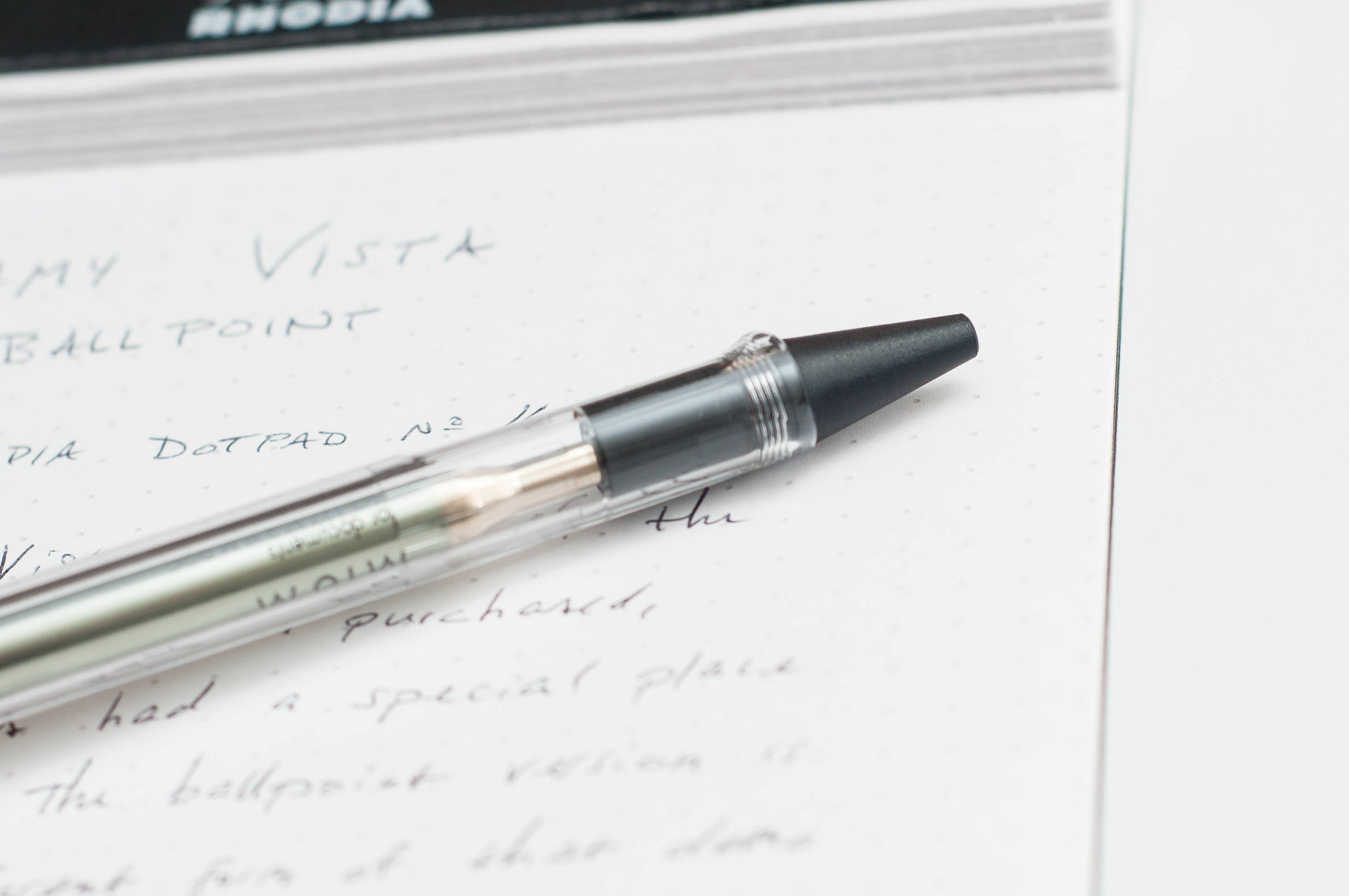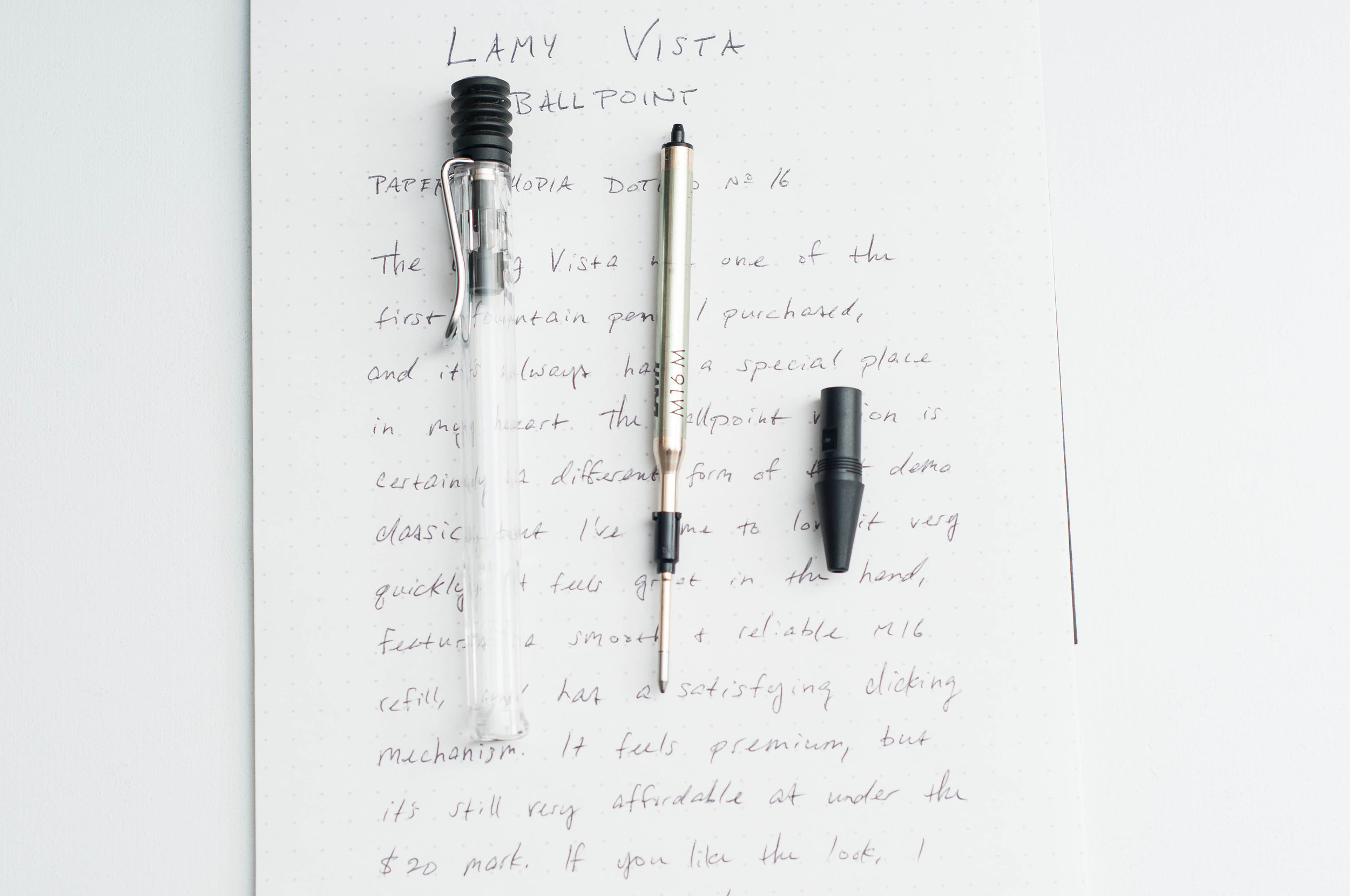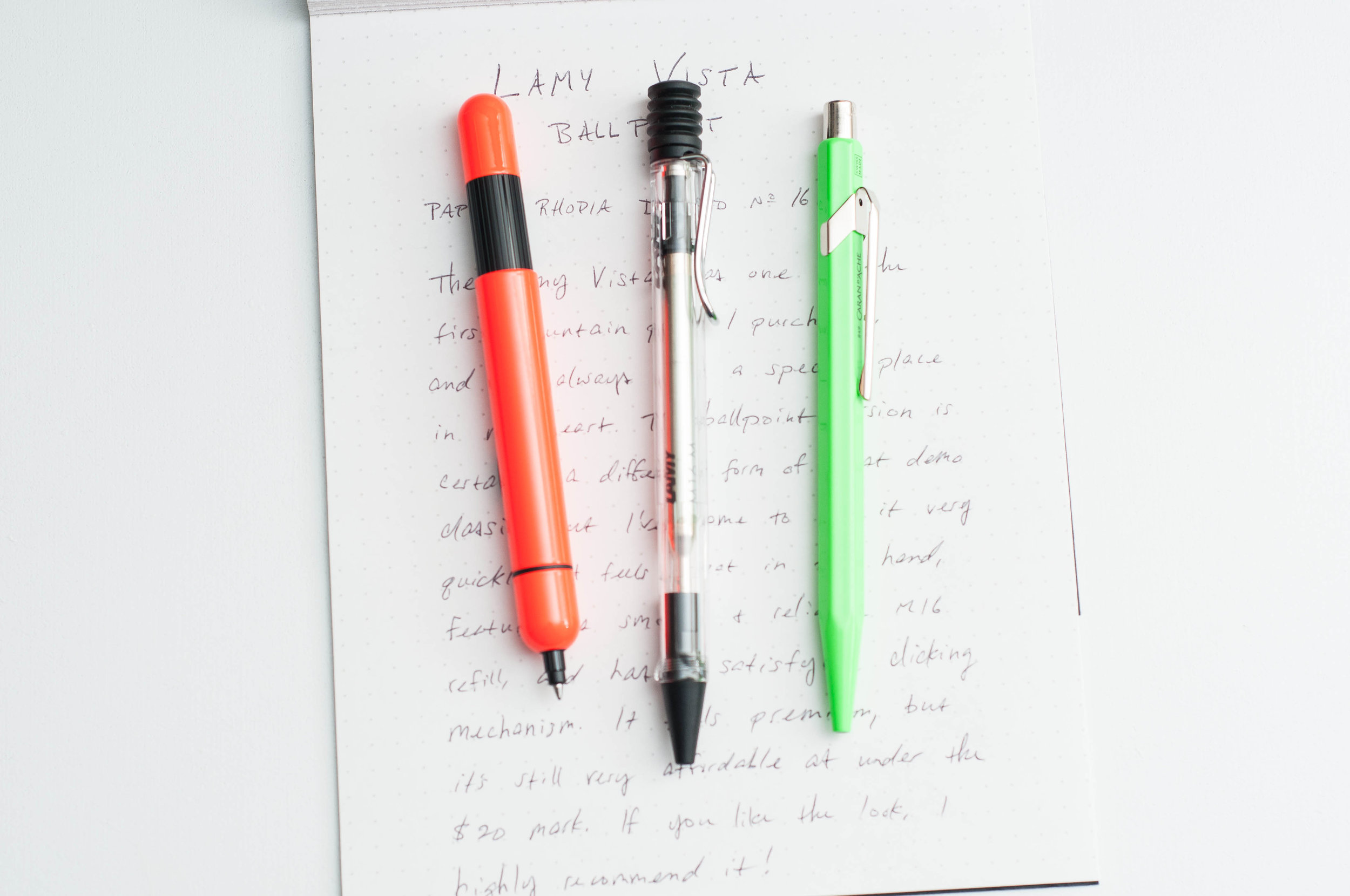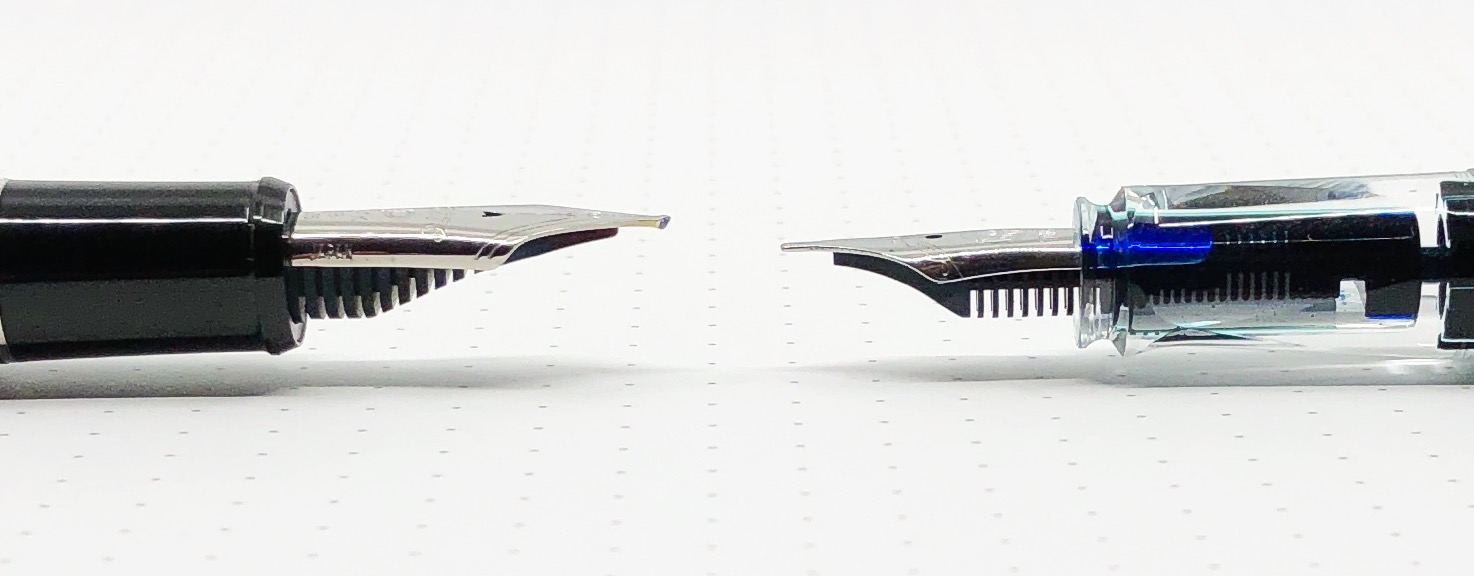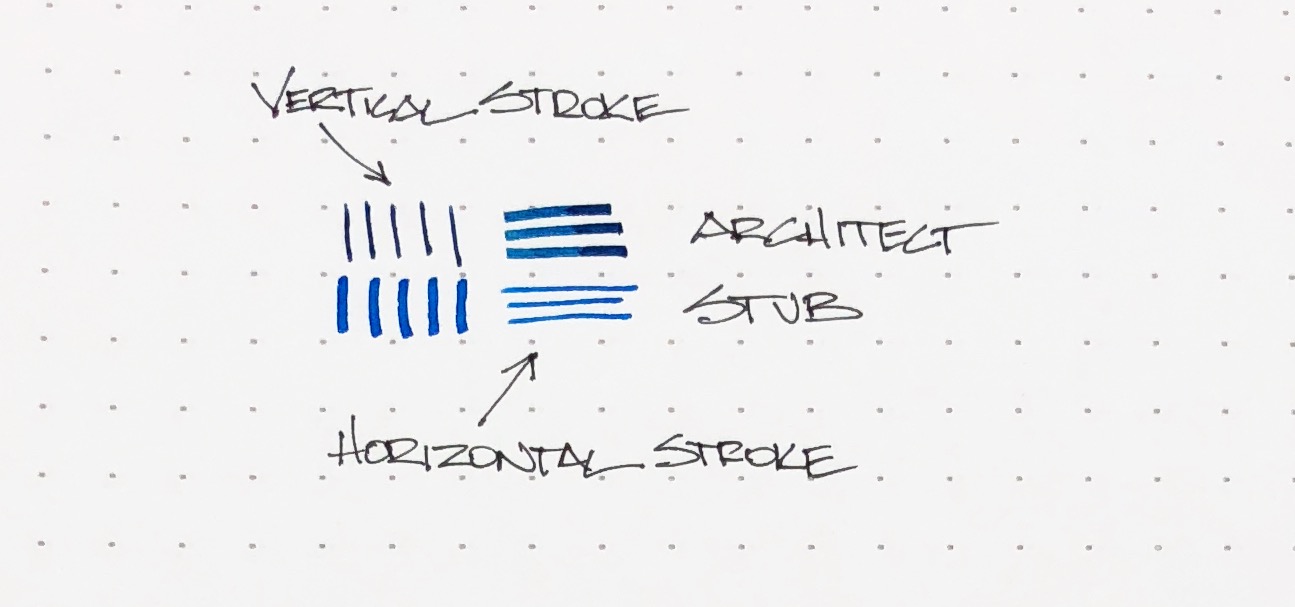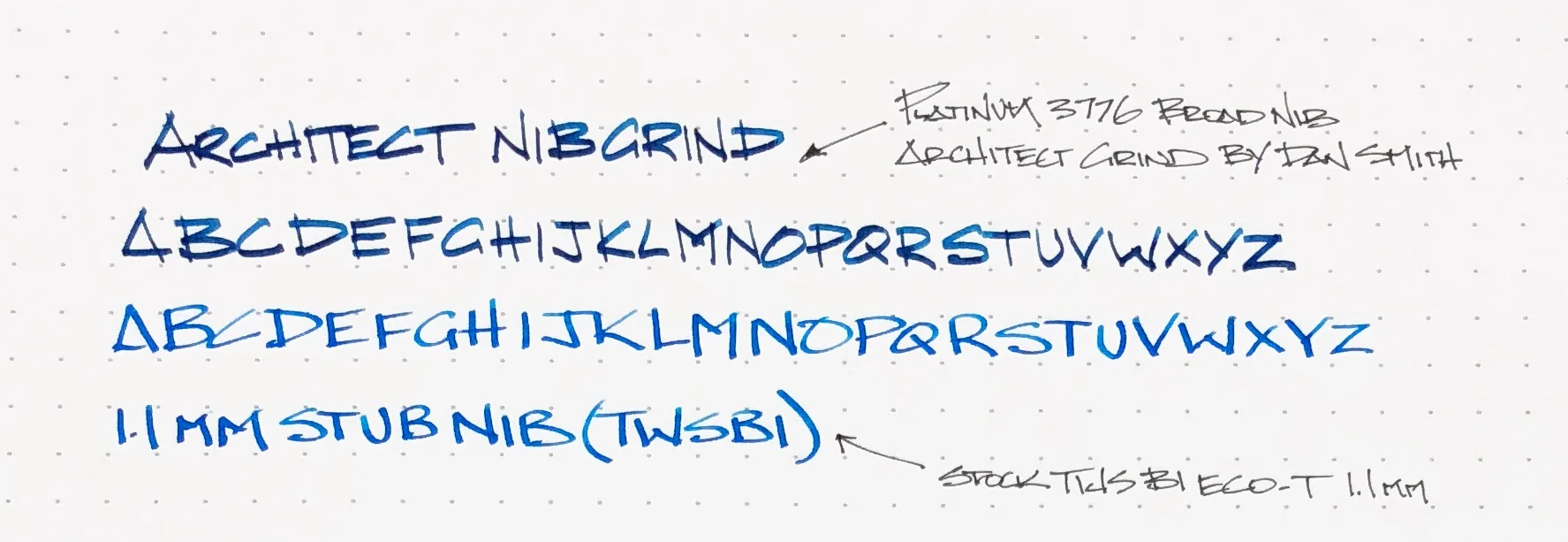(Jeff Abbott is a regular contributor at The Pen Addict. You can find more from Jeff online at Draft Evolution and Twitter.)
Back in 2012, I was just beginning to develop an interest in fountain pens and the plethora of options that come along with this versatile writing instrument. Toward the beginning of that slippery slope, the Lamy Vista fountain pen found its way to me. It wasn’t the first or second pen I bought, but it was definitely in the first five. That being said, the Vista has always had a special place in my collection.
Like so many of Lamy’s products, it’s available in several different versions. While the Lamy Vista fountain pen was my intro to this product, I recently picked up a ballpoint version. While my first thought is that the ballpoint pen is "less than" the fountain pen version, I soon realized that my assumption was way off-base. The Lamy Vista ballpoint is a fantastic ballpoint pen that echoes the quality feel of its fountain pen cousin.
On the outside, the Vista ballpoint looks similar enough to the flagship fountain pen version, but there are some noticeable differences that pop out. For one, this is a retractable pen, so there is no cap. Instead, there’s a funny looking click mechanism on top that is covered by a soft, flexible rubbery material—and it’s so much fun to press. The nock mechanism has an incredibly satisfying sound, and the spring requires a decent amount of pressure to operate the click mechanism. You will not accidentally extend or retract this pen.
Like the Vista, Safari, and AL-Star pens, the Vista ballpoint also has a contoured grip section. While not as aggressive as the capped fountain pen variants, the finger positions are the same and will likely divide people based on opinions in the same way. I like the feel of the grip, but I use a "standard" three finger grip when writing. Your mileage may vary due to this opinionated design choice, but it’s nothing new for the brand.
The clip on the ballpoint pen is a bit shorter and smaller than the capped version, but it’s still strong and useful. Finally, the tip of the pen unscrews to give you access to the refill. The only branding on the pen is on the barrel opposite the clip. The shiny "LAMY" logo is sometimes hard to see against the translucent barrel, but you can also see the branding on the refill inside.
So, how does this thing write? As far as ballpoint refills go, this one is great. I love the Lamy Pico as well, and this feels like the same refill, albeit just a bit shorter. It’s a smooth writer with just enough feedback to keep you informed of your pen strokes. The ink is dark and consistent. I haven’t had any issues with ink globbing up, skipping, or thinning out while writing. It’s a truly enjoyable ballpoint experience. I’d hope so since the refill is a quarter of the price of the pen!
Overall, the Lamy Vista is a stylish ballpoint pen that I’ve really enjoyed using. The translucent barrel is an eye-catcher, and the click mechanism is addictive. Throw an excellent refill on top, and you’ve got a great $20 pen. You can usually pick it up for a few bucks cheaper, though.
(Vanness Pens provided this product at no charge to The Pen Addict for review purposes.)
Enjoy reading The Pen Addict? Then consider becoming a member to receive additional weekly content, giveaways, and discounts in The Pen Addict shop. Plus, you support me and the site directly, for which I am very grateful.
Membership starts at just $5/month, with a discounted annual option available. To find out more about membership click here and join us!




